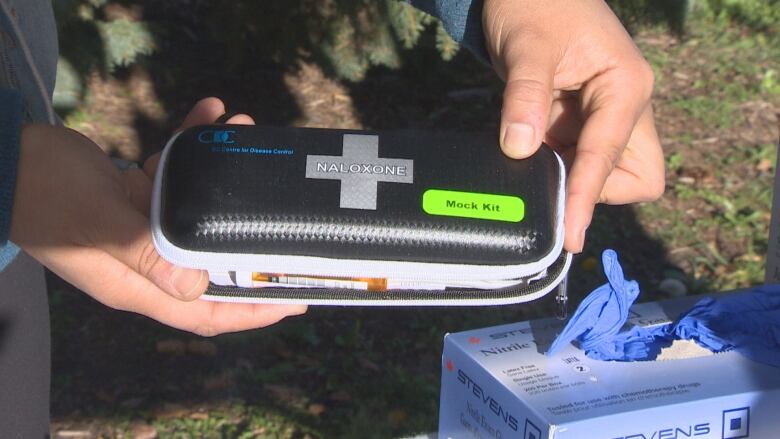Simulated safe injection site in Regina aimed at creating awareness
Drug injection site won't be operational

A simulated supervised injection sitewill be set up outside Regina's city hall today.
No drugs will be administered and no clean needles will be given out. Rather, the aim is to engage the community in an educated conversation about supervised injection sites.
"It won't be operational, in the sense that we won't be doing direct service provision. People won't be coming in to inject drugs," Regina frontline worker Lorne Gill said.

Gill is helping with the site, alongside other local advocates who have collaborated with Collective Resistance to Injustice (CRI).
CRI isa Vancouver-based group that formed in the wake of B.C's fentanyl crisis and is currently campaigning across Canada, heading to Parliament Hill.
Gill said in other parts of Canada, people have been opening up actual injection sites, butsaid they weren't sure how the community or law enforcement would respond here.
Organizers have put a focus on conversation and education, he said.
Gill moved to Regina two years ago, after working more than a decade as a frontline worker in downtown Vancouver.
He said many Saskatchewanpeople appear resistant.

"I think when people hear safe injection sites either they get their backs up or there's a lot of fear and questions."
For Gill, that's what the pop up site isabout. He wants to hear what the community thinksand possibly shift perspective.
"All we're doing is offering health care services to people who desperately, desperately need them."
Why open a supervisedinjection site?
Saskatchewan has the highest rates of hospitalizations for opiate overdoses in all of Canada based on population, according to a Canadian Institute for Health Information 2014-2015 study titled Hospitalizations and Emergency Department Visits Due to Opioid Poisoning in Canada.
"We clearly have a crisis here. That statistic to me, coming from B.C., was shocking," Gill said.
He also noted Saskatchewan's HIV rate which is two times higher than the national average.
- Sask. doctors call for state of emergency over HIV rates
- Committee looking into safe injection site for Saskatoon
"It's not just about providing a place for someone to inject, it's about providing them with clean needles, providing them with access to other health care services."
Furthermore, Gill said it's fiscally responsible to open a safe injection site because of the money that could be savedon health care by potentially preventing disease transmissionand overdoses.
"I know that's horrible, because the argument of the fact that people should have access to health care regardless of which lifestyle they're leading isn't enough."
Saskatchewan studies still needed: Doctor
"When we look at safe injection sites, there is the potential to prevent overdose deaths by providing care immediately if somebody does inject too much," said Dr. Peter Butt.
However, he said there can be negative consequences of intravenous drug use that a safe site won't prevent, like damage to the heart valves or infections.
He says studies should be done on what a safe, or supervised, injection site would mean for Saskatchewan communities.
"These are difficult waters to navigate because we don't want to encourage on one hand, but what we're endeavouring to do is reduce the risks and harms," Butt said.
He noted good harm reduction strategies should include a strong outreach aspect, so people can be linked with physicians and mental health and addictions services.
The sites could alsoallow staff to have conversations with users about why they use, what they are using and connect them with resources.
He said operational costs must be considered as well as examining how far people are willing to travel to get to the injection site.
- Liberals to make safe injection sites easier to open and fentanyl harder to smuggle into Canada
- Sask. hosts 1st province-wide HIV testing day
Furthermore, planning should adopt good practices from other cities, but adapt them to be community specific, Butt said.
"What works in the downtown eastside of Vancouver may not necessarily work in Saskatoon or Regina," he said.
"We need to think about the population being served and what their unique needs are."












_(720p).jpg)


 OFFICIAL HD MUSIC VIDEO.jpg)
.jpg)



























































































